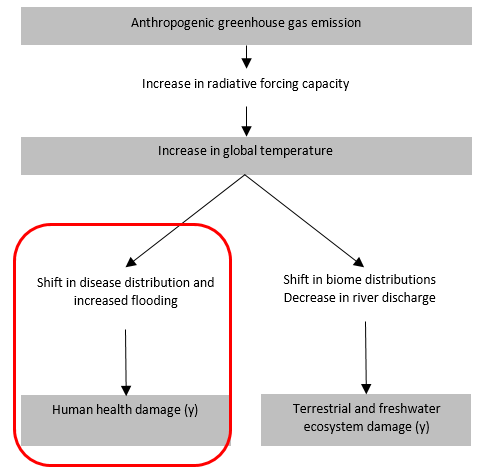Anthropogenic emissions of greenhouse gases cause the future climate to change. This change in climate affects the Areas of Protection ‘Human Health’ and ‘Ecosystem quality’, the latter is divided into freshwater and terrestrial ecosystems.
Cause-effect pathway
The emission of greenhouse gases will cause a rise in the earth’s atmospheric temperature which ultimately leads to increased damage to Human health and Ecosystems. This overview will focus on the human health effects only.

Modeling approach
A marginal approach for calculating the characterization factors is followed, meaning that the additional impact of a marginal increase in greenhouse gas emissions using today’s situation as the reference state. Impact is measured in disability adjusted life years for human health (DALYs).
Value choices
A number of choices have been made for the calculation of the characterization factors, namely:
- The time horizon over which effects are assessed

